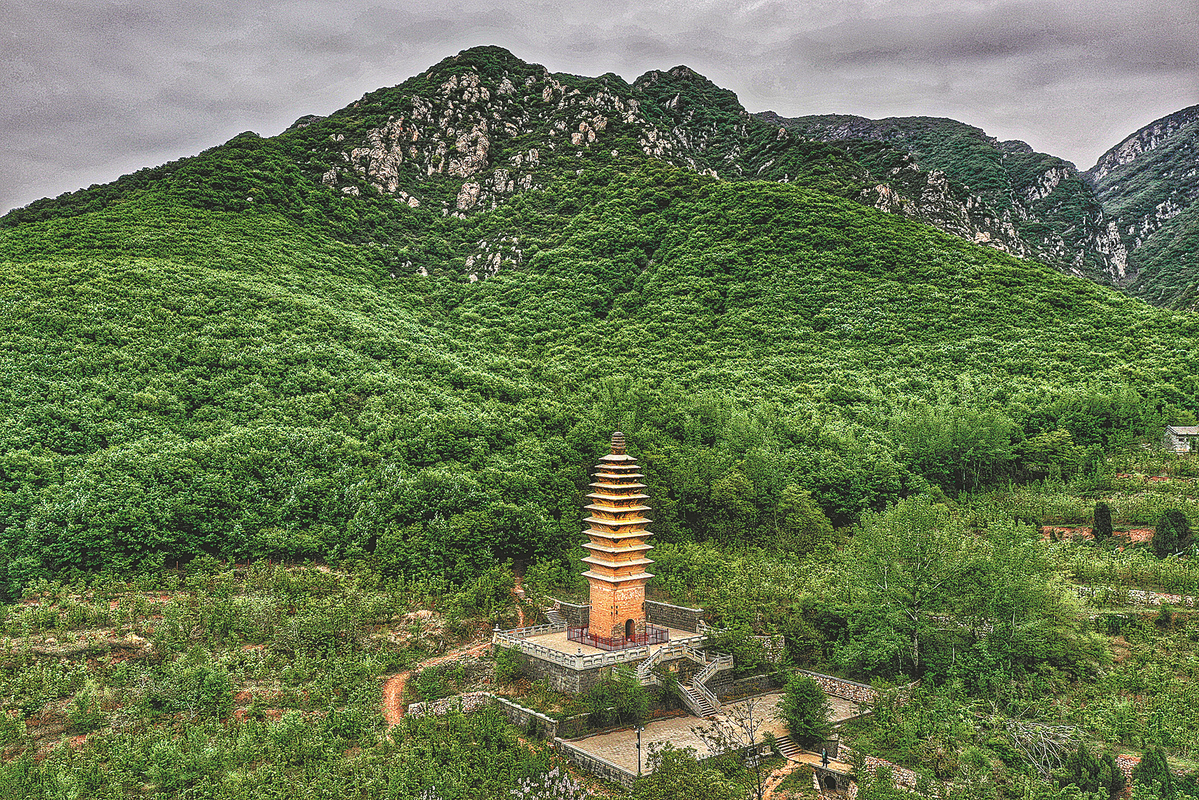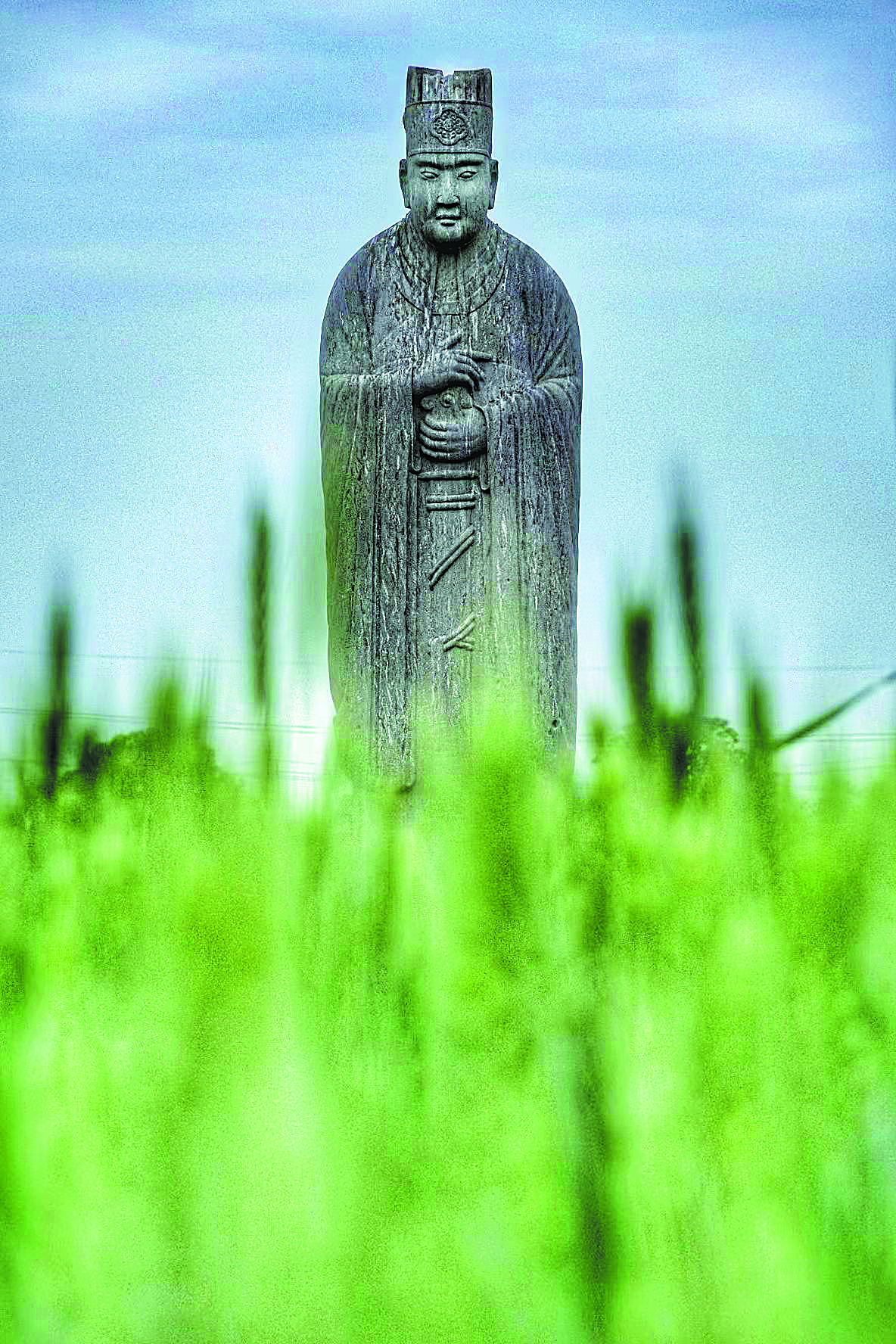Photographer Records Rich Cultural Heritage of Henan

The Yongtai Temple Pagoda of the Tang Dynasty (618-907) stands in a valley near Dengfeng city, Henan province. Wang Yi/For China Daily
Images of ancient relics are an important resource in times of rapid urbanization
For Wang Yi, being able to work on something you love is one of life's greatest pleasures. This is something the 49-year-old photographer has managed to achieve as an employee of a cultural relics bureau in Henan province, which oversees the second largest number of immovable cultural artifacts in the country.
Apart from shooting regular publicity work for the organization, Zhang photographs cultural relics in Zhengzhou, the provincial capital, to supplement the bureau's database and also to post on his Weibo account, China's Twitter-like social media platform, under the hashtag "a cultural relics photographer in Zhengzhou".
So far, his 2,000 posts have been viewed more than 10 million times, and some Zhengzhou residents have said that they were surprised to discover there were so many stunning historical sites in the city that they have never noticed before.
Initially, Zhang posted photos simply as a way to record his work, but when he began to receive positive feedback from netizens, he felt a responsibility to update his posts and publicize local culture.
"I'm not that ambitious. I hope more people, especially local residents and those living in nearby cities and provinces, will get to know about our heritage and how beautiful this city is," Wang said.
Some 3,600 years old, Zhengzhou was the capital of the Shang Dynasty (c.16th century-11th century BC) for more than 150 years. The foundations of a grand palace, large-scale sacrificial relics and tens of thousands of cultural antiques have been unearthed in the city.

A complex of ancient buildings near Zhengzhou, Henan. Wang Yi/For China Daily
Chinese civilization has one of the longest uninterrupted histories in the world.
"Today, most people still think of Zhengzhou in terms of its history of railway transportation," Zhang said. "I believe it's important for local residents to understand the cultural heritage of their city through my photos and other means."
Classic historical sites such as the Zhengzhou Wenmiao scenic area and little-known ancient buildings are among Wang's subjects.
"I usually keep an eye on the maintenance of historical sites and shoot photos before and after maintenance for comparison," he said.
He added that maintaining historical sites is a way to protect the dignity of both the sites themselves and nearby residents because lives will also improve if the surroundings of old buildings are upgraded.
Since Wang started working at the bureau 12 years ago, he has shot almost all the historical sites in the city, including some that he has visited several times in different seasons to record the way they look throughout the year.
He recalled a time he was trying to shoot an ancient temple on a snowy day. His attempts failed because the snow was either too light to make the picture satisfying, or so heavy that the road to the temple was blocked.
"For my last try, I waited three hours to finally get the picture I wanted and could barely feel my legs from the freezing cold. But it was totally worthwhile," he said.
He sometimes has to carry heavy cameras and tripods to photograph ancient buildings in remote mountain locations. Once, he spent a month shooting ancient temples in and around Zhengzhou for a book.

A stone statue of an ancient official at a Song Dynasty (960-1279) tomb in Gongyi, Henan. Wang Yi/For China Daily
Wang said the staff members in charge of historical sites have greatly contributed to his work.
"I wouldn't even know, let alone find, some of the sites without help from staff members, who work hard to preserve historical sites," he said.
When Wang's social media followers suggested he monetize his photography through livestreams or by submitting them to commercial websites, the cultural relics worker, as he calls himself, refused.
He said he could not have taken his photos without the support of the local bureau, that offered help in the form of equipment and access to the sites.
"A famous international photographer might not be allowed to work in the Shaolin Temple in the middle of the night, but I can," he joked, adding that he was concerned about exposing the exact locations of some of the sites he's photographed for fear they might be robbed.
This year, Wang plans a photo series of historical sites shot at night. "Hopefully we will publish a book soon and hold an exhibition," he said.
Meanwhile, he will keep collecting images for the database, which is a useful way of learning about the area's historical sites during a period of rapid urban development.

Part of a stone bas-relief of a divine bird at the Song tomb in Gongyi. Wang Yi/For China Daily

A stone statue of a lion stands at the tomb. Wang Yi/For China Daily
